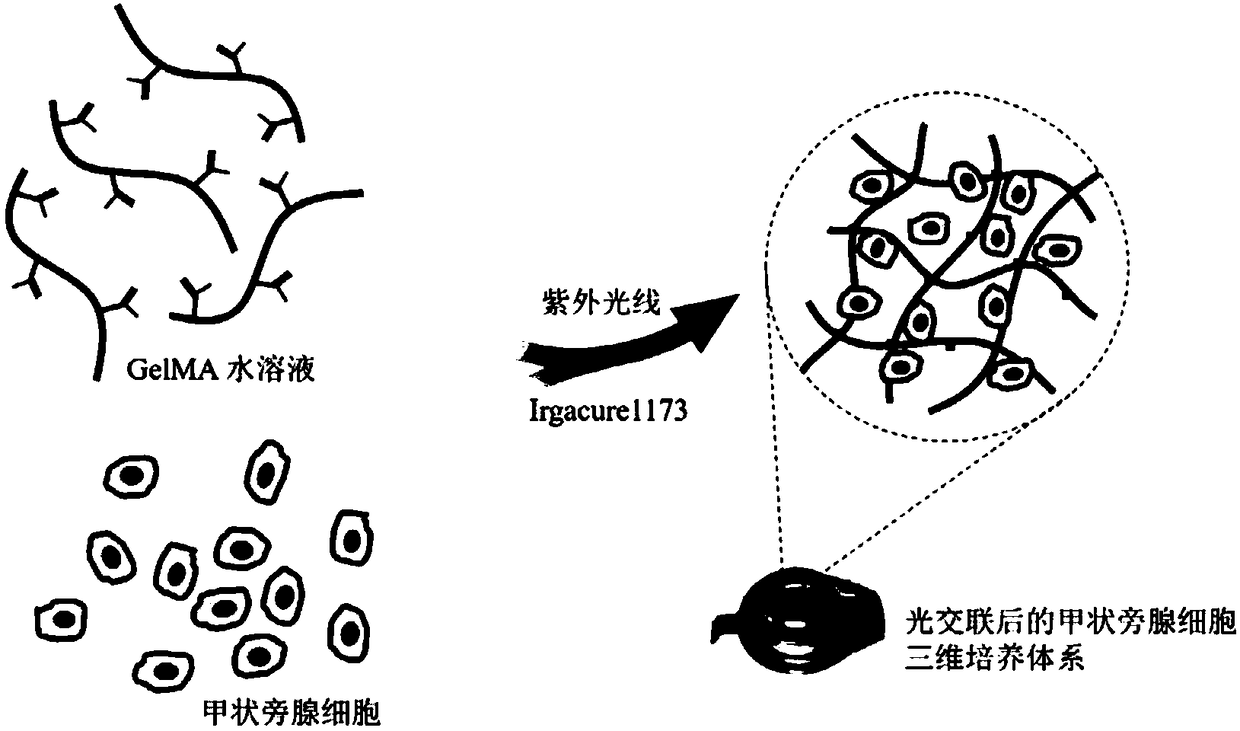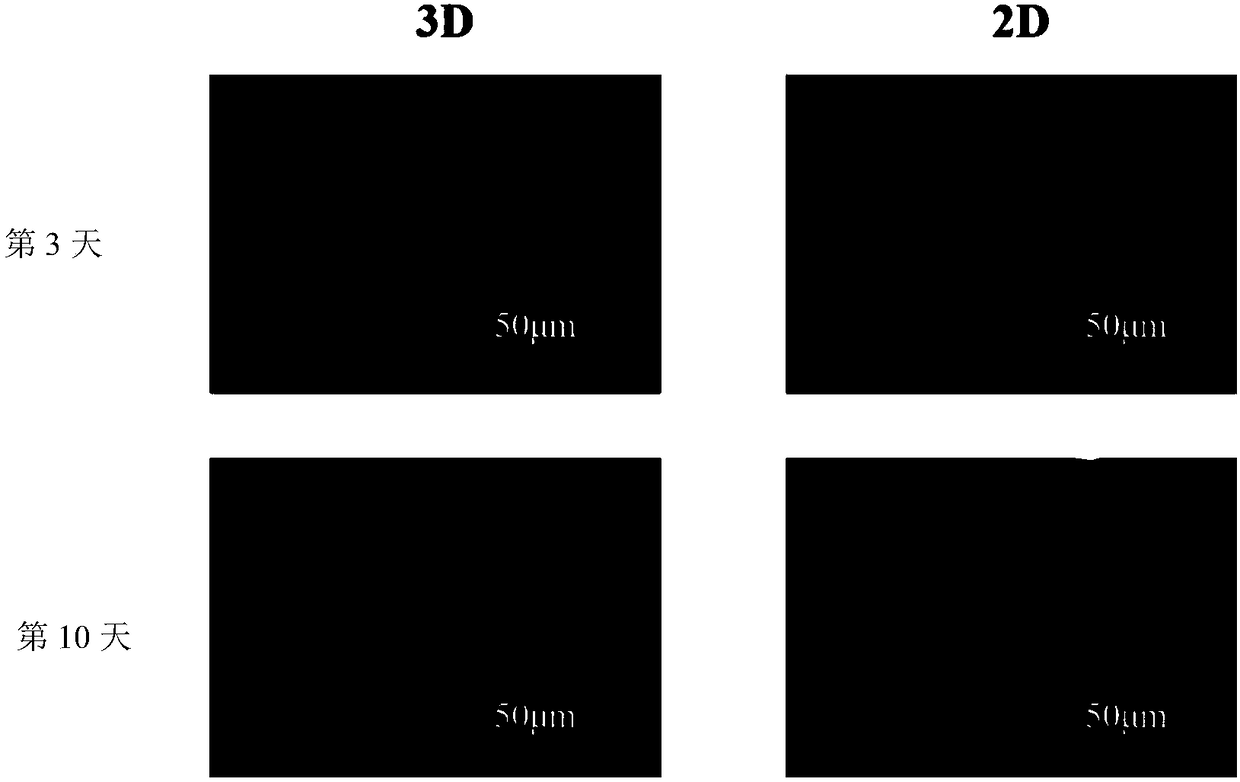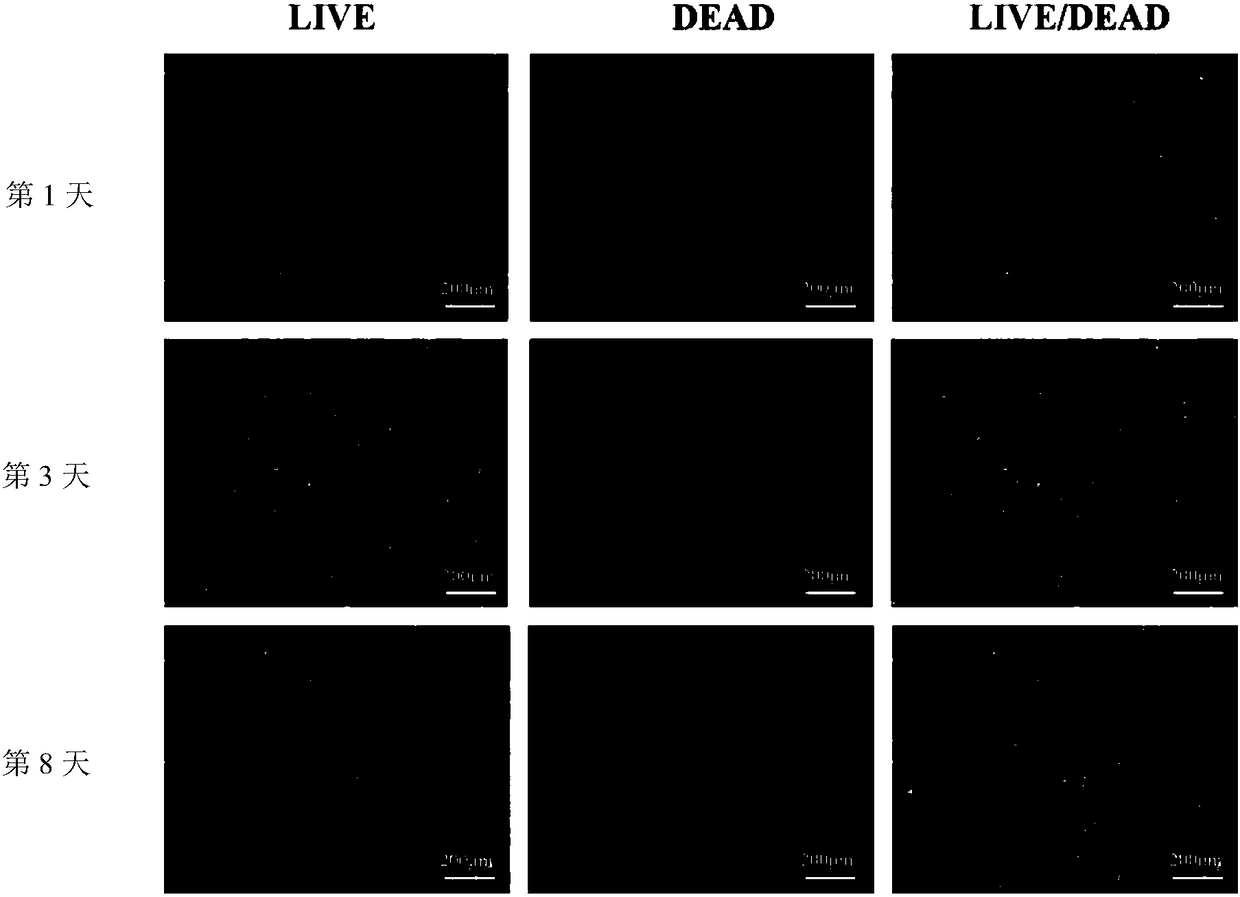Three-dimensional tissue-like body of composite cells and preparation method and application thereof
A cell, three-dimensional technology, applied in the field of three-dimensional organoids of composite cells and their preparation, can solve the problems of difficulty in nutrient entering into the cell mass, dense cell clumping, and reduced cell survival rate, and achieve the maintenance of cell shape and the improvement of activity. , the equipment requirements and costs are low, and the preparation method is simple and fast.
- Summary
- Abstract
- Description
- Claims
- Application Information
AI Technical Summary
Problems solved by technology
Method used
Image
Examples
preparation example Construction
[0026] One aspect of the present invention provides a method for preparing three-dimensional organoids of composite cells, the method comprising the following steps: uniformly mixing an aqueous gelatin solution containing a double bond group modification with a suspension of living cells;
[0027] Add photoinitiator and cure by ultraviolet light.
[0028] Preferably, the double bond-containing group-modified gelatin is gelatin modified with acrylic acid or its derivatives. More preferably, the acrylic acid or its derivatives are one or more selected from acrylic acid, methacrylic acid, isopropyl acrylic acid, and methacrylic anhydride. The selection of specific compounds can be carried out according to actual needs. The use of acrylic acid or its derivatives can easily modify the gelatin, thereby cross-linking to build a three-dimensional system. At the same time, the use of acrylic acid or its derivatives to modify the gelatin will not damage the biological activity of the gelatin...
Embodiment 1
[0042] Example 1: Preparation of three-dimensional organoids of compound parathyroid cells
[0043] Among them, the used double bond group-modified gelatin (DB-Gel) and parathyroid cell suspension are prepared as follows:
[0044] A. Preparation of modified gelatin (DB-Gel) containing double bond groups
[0045] Weigh 20g of gelatin and place it in a three-necked flask. Add 200mL of sterile PBS solution and place it on a thermostatic heating magnetic stirrer. Dissolve it at 240r / min and 50℃ for about 2-3h until the pale yellow liquid is clear and uniform without particulate matter. . Connect a constant-pressure burette to the three-necked flask, close the valve, and add 16 mL of methacrylic anhydride; control the dropping rate to one drop every 3-4s, wrap the constant-pressure burette with tin foil, maintain the speed and temperature unchanged, and make the two fully react. About 3-4h. Put an equal volume of PBS solution in a beaker and preheat it to 50°C; after the above reaction...
PUM
 Login to View More
Login to View More Abstract
Description
Claims
Application Information
 Login to View More
Login to View More - R&D
- Intellectual Property
- Life Sciences
- Materials
- Tech Scout
- Unparalleled Data Quality
- Higher Quality Content
- 60% Fewer Hallucinations
Browse by: Latest US Patents, China's latest patents, Technical Efficacy Thesaurus, Application Domain, Technology Topic, Popular Technical Reports.
© 2025 PatSnap. All rights reserved.Legal|Privacy policy|Modern Slavery Act Transparency Statement|Sitemap|About US| Contact US: help@patsnap.com



